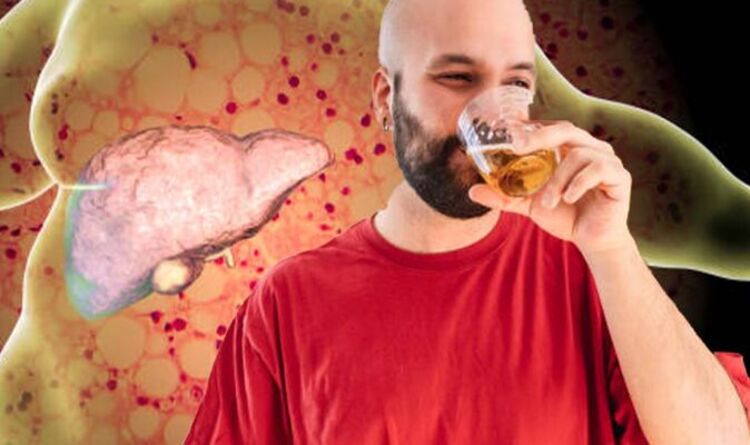This Morning: Dr Zoe explains ulcers after coffee and alcohol
We use your sign-up to provide content in ways you’ve consented to and to improve our understanding of you. This may include adverts from us and 3rd parties based on our understanding. You can unsubscribe at any time. More info
A healthy liver should contain little or no fat, though the NHS estimates up to one in every three people in the UK has early stages of NAFLD, where there are small amounts of fat in their liver. Cirrhosis is the result of long-term, continuous damage to the liver and may be due to many different causes.
The British Liver Trust (BLT) says there are a number of later symptoms, as the liver is struggling to function.
The organisation says increased sensitivity to drugs, both medical and recreational, and increased sensitivity to alcohol are symptoms.
Other signs include intensely itchy skin, jaundice, easy bruising and difficulty in stopping small bleeds and fevers with high temperature and shivers.
Writing may also become difficult, spidery and small veins may show up, you may undergo hair loss and swelling of the legs, ankles, or feet.

The BLT says early symptoms include generally feeling unwell and tired all the time, loss of appetite, loss of weight and muscle wasting, and feeling sick and vomiting.
Other early signs include pain in the liver area, spider-like small blood capillaries on the skin above waist level, blotchy red palms and disturbed sleep patterns.
The charity says if you have any of the following symptoms you must see a doctor straight away, especially if you have recently been diagnosed with cirrhosis:
- Fever with high temperatures and shivers, often caused by an infection
- Shortness of breath
- Vomiting blood
- Very dark or black tarry stools (faeces)
- Periods of mental confusion or drowsiness.
The charity says: “Although these symptoms may seem very different, because your liver is responsible for so many different functions, if it stops working properly, a range of problems can result.”
Most people will only ever develop the first stage of NAFLD, very often without realising it.
In a small number of cases, it can progress and lead to liver damage if not detected and managed.
There is no medication specifically for fatty liver disease, though making lifestyle changes that can significantly improve your health.

A doctor will help diagnose your condition correctly and give you the right advice and care plan.
If you develop severe cirrhosis, stage four fatty liver disease, and your liver stops working properly, you may need to be put on the waiting list for a liver transplant.
For adults, the average waiting time for a liver transplant is 135 days for transplants.
People are more likely to develop NAFLD as a result of a number of factors. For example, if you are insulin resistant, as people can be when they have polycystic ovary syndrome.

Fatty liver disease also tends to develop in people who are overweight or obese or have diabetes, high cholesterol or high triglycerides.
Having high levels of fat in your liver is also associated with an increased risk of other health problems, such as diabetes, high blood pressure and kidney disease.
If detected and managed at an early stage, NAFLD can be stopped from getting worse and the amount of fat in your liver can be reduced.
The American liver foundation says that if more than five to 10 percent of the liver’s weight is fat, then it is called a fatty liver.
Source: Read Full Article
